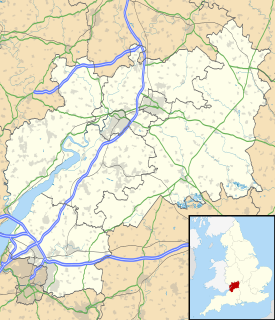Related Research Articles
A Special Protection Area (SPA) is a designation under the European Union Directive on the Conservation of Wild Birds. Under the Directive, Member States of the European Union (EU) have a duty to safeguard the habitats of migratory birds and certain particularly threatened birds. Together with Special Areas of Conservation (SACs), the SPAs form a network of protected sites across the EU, called Natura 2000. Each SPA has an EU code – for example the North Norfolk Coast SPA has the code UK9009031.
A Special Area of Conservation (SAC) is defined in the European Union's Habitats Directive (92/43/EEC), also known as the Directive on the Conservation of Natural Habitats and of Wild Fauna and Flora. They are to protect the 220 habitats and approximately 1000 species listed in annex I and II of the directive which are considered to be of European interest following criteria given in the directive. They must be chosen from the Sites of Community Importance by the State Members and designated SAC by an act assuring the conservation measures of the natural habitat.
Natura 2000 is a network of nature protection areas in the territory of the European Union. It is made up of Special Areas of Conservation and Special Protection Areas designated respectively under the Habitats Directive and Birds Directive. The network includes both terrestrial and Marine Protected Areas.
The Emerald network is a network of Areas of Special Conservation Interest to conserve wild flora and fauna and their natural habitats of Europe, which was launched in 1989 by the Council of Europe as part of its work under the Convention on the Conservation of European Wildlife and Natural Habitats or Bern Convention that came into force on 1 June 1982. It is to be set up in each Contracting Party or observer state to the Convention.
The Habitats Directive is a European Union directive adopted in 1992 as an EU response to the Berne Convention. It is one of the European Union's directives in relation to wildlife and nature conservation, another being the Birds Directive. The Habitats Directive, together with the Birds Directive, are also called the "nature directives". The Habitats Directive requires national governments to specify areas that are expected to be ensuring the conservation of flora and fauna species. This led to the setting up of a network of protected areas across the EU, special areas of conservation which together with the existing Special Protection Areas, became the so-called Natura 2000 network established to protect species and habitats. The annexes of the directive outline the protected habitats and species:

Beskydy Protected Landscape Area (PLA) is the largest PLA in the Czech Republic. The area is 1,160 km2 (448 sq mi). It lies in the south-eastern part of the Moravian Silesian and eastern part of Zlín regions, on the border with Slovakia. All its area belongs to the Outer Western Carpathians and comprises most of the Moravian-Silesian Beskids Range, a large part of the Vsetínské vrchy Range, and the Moravian part of the Javorníky Range. In Slovakia, Kysuce Protected Landscape Area borders the area.

Protected areas of Poland include the following categories, as defined by the Act on Protection of Nature of 16 April 2004, by the Polish Parliament:

Barnack Hills & Holes is a 23.3 hectare biological Site of Special Scientific Interest in Barnack in Cambridgeshire. It is also a national nature reserve. It is a Nature Conservation Review site, Grade I. In 2002 it was designated as a Special Area of Conservation, to protect the orchid rich grassland as part of the Natura 2000 network of sites throughout the European Union.

Montaña Palentina is a natural park in the north of the province of Palencia in Castile and León, Spain.
The Cantabrian capercaillie is a subspecies of the western capercaillie in the grouse family Tetraonidae. It is one of two subspecies found in Spain.

The LIFE Programme is the European Union’s funding instrument for the environment and climate action. The general objective of LIFE is to contribute to the implementation, updating and development of EU environmental and climate policy and legislation by co-financing projects with European added value.

Many parts of Wales are protected areas, according to a number of designations. They include three national parks, and five Areas of Outstanding Natural Beauty.

Dixton Wood is a 13.14-hectare (32.5-acre) biological Site of Special Scientific Interest in Gloucestershire, notified in 2000. Dixton Wood is recognised as a Special Area of Conservation (SAC) under the EU Habitats Directive.
The Protected Areas of the Azores are the basic administrative-territorial and conservation structures in the archipelago of the Azores and the surrounding oceans. The areas integrate the entirety of the Azores within its Exclusive Economic Zone, as well as the surrounding waters, under the international agreements and conventions. The network realizes the categorization of management for protected areas adopted by the International Union for Conservation of Nature (IUCN), adapting it to the specific geographical, environmental, cultural and political-administrative territory of the archipelago.
Institute for Environmental Solutions (IES) is a non-profit research organization in Latvia that utilises airborne remote sensing technologies and creates multidisciplinary teams to design and develop innovative environmental solutions. IES is a network-based organization which brings together scientists, artists, engineers and specialists from Latvia and abroad.

Many parts of Scotland are protected in accordance with a number of national and international designations because of their environmental, historical or cultural value. Protected areas can be divided according to the type of resource which each seeks to protect. Scottish Natural Heritage has various roles in the delivery of many environmental designations in Scotland, i.e. those aimed at protecting flora and fauna, scenic qualities and geological features. Historic Environment Scotland is responsible for designations that protect sites of historic and cultural importance. Some international designations, such as World Heritage Sites, can cover both categories of site.

The Boreal Biogeographic Region is the biogeographic region of Northern Europe that consists primarily of coniferous forests and wetlands.

The biogeographic regions of Europe are biogeographic regions defined by the European Environment Agency. They were initially limited to the European Union member states, but later extended to cover all of Europe west of the Urals, including all of Turkey. The map of biogeographic regions is deliberately simplified and ignores local anomalies. It is intended primarily as a framework for coordinating and reporting overall results of conservation efforts.

The Black Sea Biogeographic Region is a biogeographic region of land bordering the west and south of the Black Sea, as defined by the European Environment Agency.

The Steppic Biogeographic Region is a biogeographic region of Europe, as defined by the European Environment Agency.
References
| Wikimedia Commons has media related to Sites of Community Importance . |
| This article about the European Union is a stub. You can help Wikipedia by expanding it. |